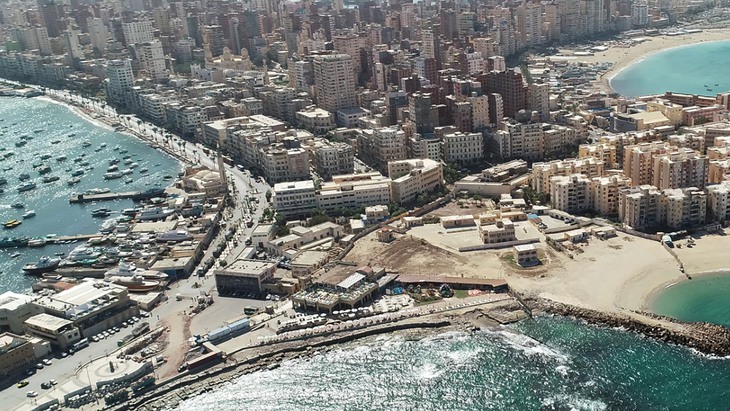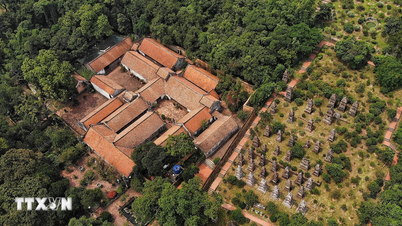Alexandria is Egypt's second largest city and a very important seaport - Photo: CROSS EGYPT CHALLENGE
Located on the Mediterranean coast and northwest of Cairo, Alexandria is Egypt's second largest city and a very important seaport for the country.
The city gradually sank over time
Alexandria's impressive history dates back to when the city was founded by Alexander the Great in 331 BC, and has since become a major cultural and intellectual center, according to Indy 100 . It is also the birthplace of Queen Cleopatra.
Today, Alexandria is home to many ancient monuments and ruins, including the Kom el Shoqafa catacombs and the Anfushi tombs. As of 2023, the city has a population of 6.1 million.
Over the past 10 years, the rate of buildings on the city's waterfront has increased from about one per year to 40, according to a study published in the journal Earth's Future . This has caused great concern.
In the past two decades, 280 buildings have collapsed and more than 7,000 are at risk of future collapse, according to the study. Between 2014 and 2020 alone, 86 buildings collapsed and 201 partially collapsed across the city, causing 85 deaths.
Scientists have discovered that the city of Alexandria is sinking due to rising sea levels and coastal erosion.
“The true cost of this loss is not just bricks and mortar,” said study co-author Essam Heggy, a scientist at the University of Southern California Viterbi School of Engineering. “We are witnessing the gradual disappearance of historic cities, and Alexandria is at an alarming rate.”
Buildings in Alexandria are collapsing due to rising sea levels. Saltwater is seeping further inland, destabilizing structures and increasing the likelihood of collapse. Coastlines around the world are already changing, causing buildings to collapse at an unprecedented rate.
Protecting heritage is protecting history
Data collected shows that in the city of Alexandria, the shoreline has been moving inland by tens of meters over the past few decades. Some areas have been losing land by as much as 24 to 36 meters per year.
Sea level rise is mainly due to climate change, especially melting ice sheets and glaciers, which increase the amount of water in the oceans.
Warming ocean water due to climate change also expands, further contributing to rising sea levels.
Researchers suggest the city could prepare for future sea level rises, including building sand dunes and barriers along the coast and elevating buildings.
People living in high-risk areas may need to relocate.
“Cities like Alexandria, cradles of cultural exchange, creativity and history, play a vital role in humanity’s shared heritage,” said Heggy.
“As climate change causes sea levels to rise and coastlines to erode, protecting heritage is not just about saving buildings, but also about preserving history.”
Read moreBack to Topic Page
Back to topic
DAWN
Source: https://tuoitre.vn/thanh-pho-lon-thu-2-ai-cap-dang-chim-dan-20250415220300281.htm



































































































Comment (0)